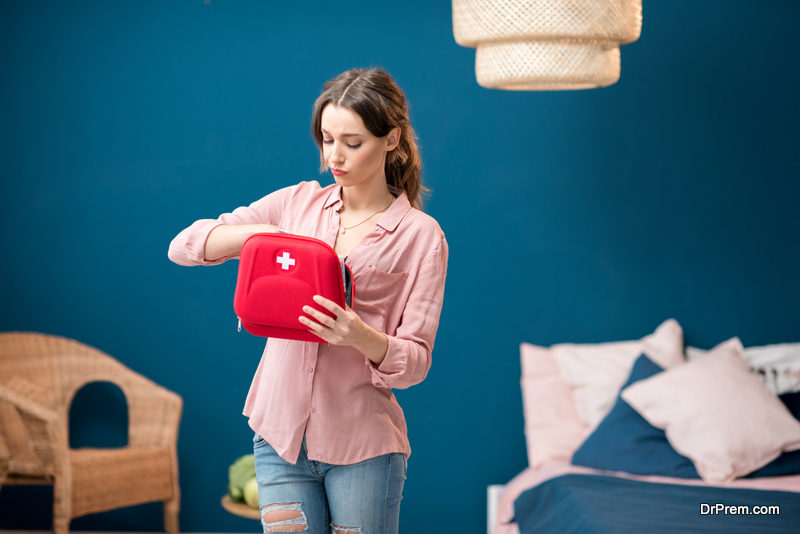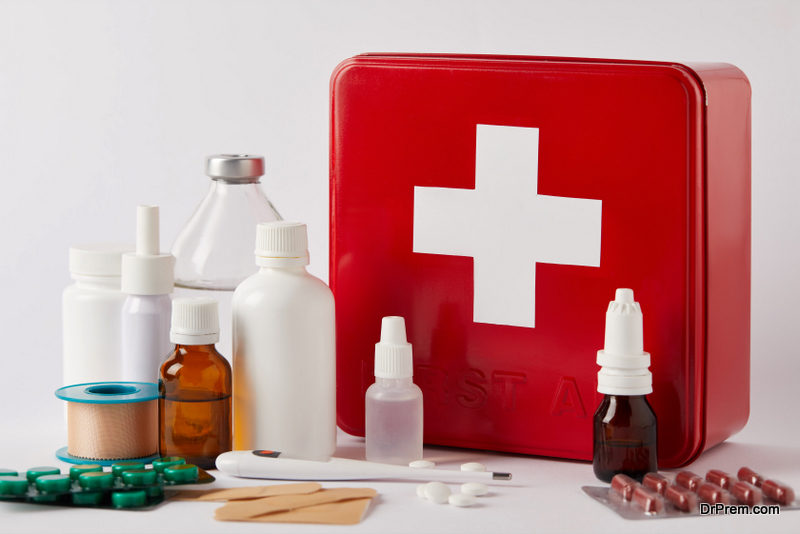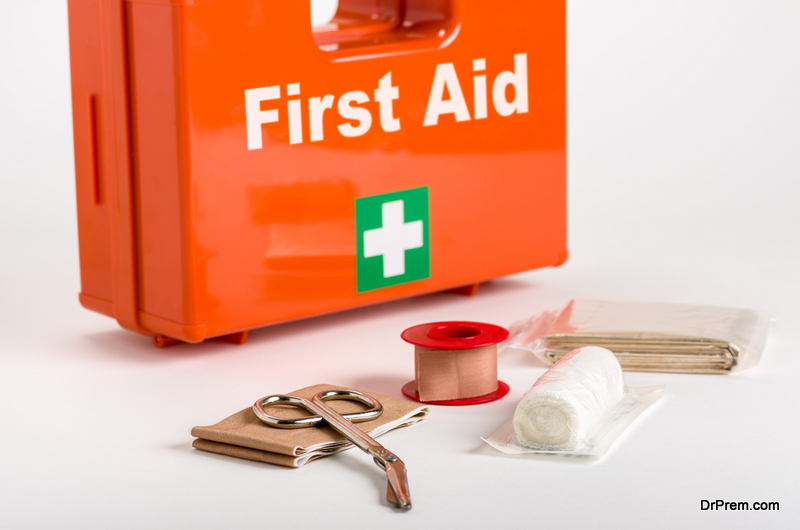Though most people would probably not like to dwell on it, the fact remains that accidents happen all the time. In particular, children are at risk for suffering injuries within their own homes. Over 3.4 million children experience an unintentional household injury every year! This means that parents especially need to be prepared for accidents happening within their house. Given that fact, today we’re going to share best practices regarding first-aid kit usage for all homeowners. Check it out here:
First-Aid Kit List
 In general, homeowners should consider purchasing all of the following items for their first-aid kit:
In general, homeowners should consider purchasing all of the following items for their first-aid kit:
- Bandages
- Adhesive tape
- Exam gloves
- Pocket mask
- Safety pins
- Scissors
- Antiseptic wipe packets
- Antibiotic ointment packets
- Adhesive cloth tape
- Aspirin
- Sterilized gauze pads
- Oral thermometer
- First-aid manual
- List of emergency phone numbers
- Soap
- Tweezers
- Instant cold packs
- Blanket
First-Aid Kit Best Practices
 It can be easy to forget about a first-aid kit if you don’t use it regularly. And, knock on wood, you won’t have to use it all that often. However, that doesn’t mean you can neglect your first-aid kit. Make sure to update it on a regular basis and to replace any items that you use and discard. Also, store your first-aid kit in a place that is easy for you to access, but that won’t expose young children to potentially harmful items (toxic liquids, sharp points) within the kits. First-time home-owners should take a few minutes to locate such an ideal spot for their at-home kit.
It can be easy to forget about a first-aid kit if you don’t use it regularly. And, knock on wood, you won’t have to use it all that often. However, that doesn’t mean you can neglect your first-aid kit. Make sure to update it on a regular basis and to replace any items that you use and discard. Also, store your first-aid kit in a place that is easy for you to access, but that won’t expose young children to potentially harmful items (toxic liquids, sharp points) within the kits. First-time home-owners should take a few minutes to locate such an ideal spot for their at-home kit.
In addition, it’s a wise idea to have a portable first-aid kit that you can take with you on trips and that is easy to transport in a car (or even on a plane). A portable kit doesn’t have to contain everything that your at-home kit does, but it should have all of the essentials.
Lastly, it’s also a good idea for homeowners to have a basic understanding of how to implement first-aid measures. Taking a CPR class, for instance, could enable you to save someone’s life in an emergency.
The Bottom Line
One of the keys to ensuring your safety and the safety of others is to know when to seek medical attention or to visit the doctor’s office. A first-aid kit can’t possibly contain all of the medical equipment that a doctor has at their disposal. (Try as you might, you’ll likely struggle to fit rows of 24 well plates, for example, within a basic first-aid kit.) Given that fact, don’t hesitate to consult a medical professional if you’re dealing with a potentially serious problem.
Article Submitted By Community Writer




